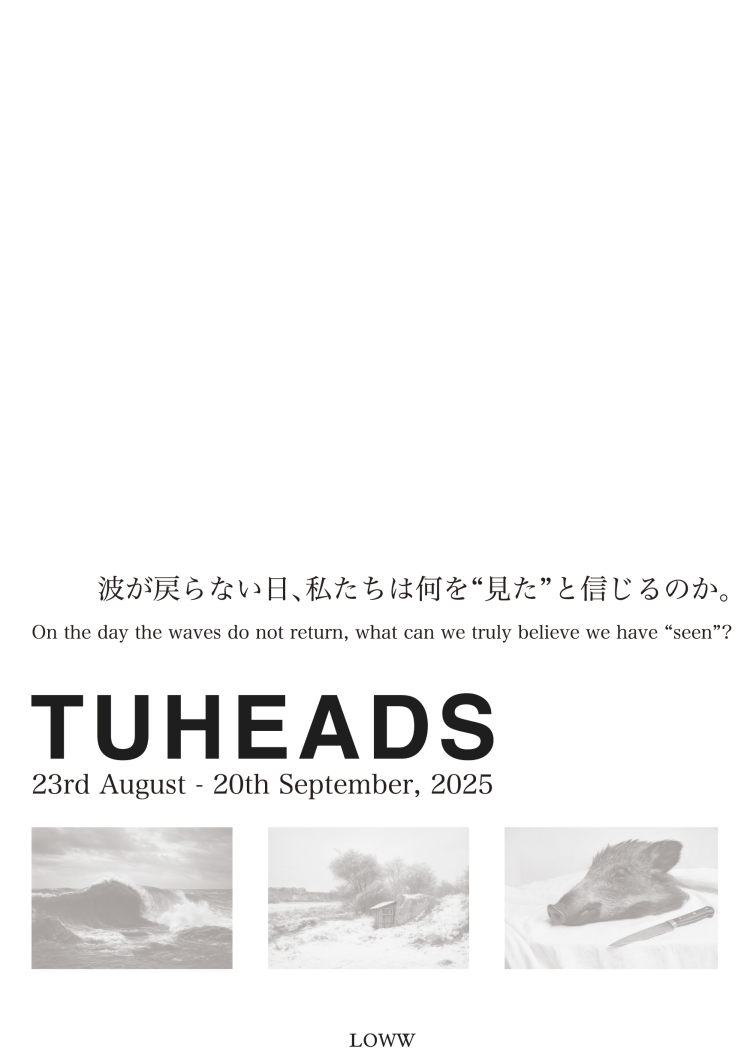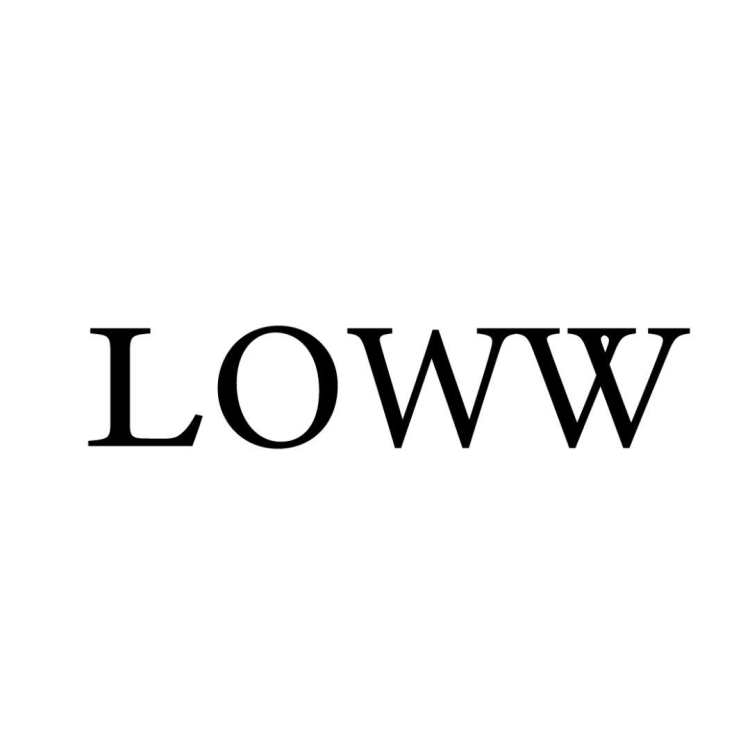TUHEADS / On the day the waves do not return, what can we truly believe we have “seen”?
Aug 23 — Sep 20, 2025
On the day the waves do not return, what can we truly believe we have “seen”?
Waves, snow, and traces—these are, by nature, mutable phenomena that disappear with time and can never retain the same form. Yet, humans believe that they have “seen” these fleeting appearances, continuously preserving them as fragments of images within the continuum of perception and memory.
The works in this exhibition constitute a practice of reconstructing and re-editing such experiences of the “ungraspable” through artificial intelligence (AI), a perceptual and semiotic apparatus of the 21st century.
Gustave Courbet, who led the realism movement in nineteenth-century painting, did not treat nature as an object of idealization or symbolization, but rather foregrounded the presence of “nature here and now.” In Courbet’s work, “seeing” was rooted in materiality, temporality, and spatiality.
Around the same time, the emergence of photography as a new medium radically reorganized the boundaries between “documentation” and “reality” within visual art. As Walter Benjamin noted, the development of photography and techniques of reproduction brought about the dissolution of the “aura” of artworks, destabilizing the very institutional foundations of seeing.
Since the twentieth century, photography, moving images, and digital media have developed as devices that mechanically capture, multiply, and distribute “fragments of reality.” The evolution of these media technologies has made clear that “seeing” is not a passive acceptance of perception, but a process of “editing,” “constructing,” and “recontextualizing.” Hiroshi Sugimoto’s inquiry into the “thickness of time,” along with the re-photographic practices of Richard Prince and Cindy Sherman, reveal the movement of images and their repetition and chains within contemporary art.
In the present age, image generation by artificial intelligence is fundamentally transforming the “documentary” and “reality” functions of photography and painting. AI traverses vast image databases, using non-human algorithmic operations to output “images that no one has ever seen before.” In this generative process, the act of “seeing” itself is redefined as an aggregate of perception, memory, imagination, information, and computation.
In cognitive science and media theory, “seeing” is understood not as mere reception of information, but as a continuous process of prediction, reconstruction, and feedback within the brain. When we sense “reality” or “déjà vu” in AI-generated images, it is the editorial binding of perceptual experience and memory—that is, the mobilization of semiotic networks—that produces such effects.
“On the day the waves do not return, what can we truly believe we have ‘seen’?” This question exposes, upon the editing apparatus called art, the disappearance of reality, the ambiguity of memory, and the fundamental uncertainty of “seeing” as a cognitive and media process.
The images assembled in this exhibition are fragments of vanishing phenomena and their traces, intersections of the history of images and information technologies, the memories of individuals and collective data—critical opportunities for rethinking “reality” and the very act of seeing.
Where does reality end, and illusion begin? Perhaps only the trajectory of “seeing” remains here, quietly persisting.
TUHEADS
ARTISTS
-
TUHEADS
VENUE
- URL
- https://www.loww.co.jp/
- 住所
- 〒152-0033 東京都目黒区大岡山1-6-6
- Tel
- 03-6421-1784
- 開館時間
- 12:00 — 20:00
- 休館日
- Tue・Wed・Thu
- 入館料
- 無料
NOTES
TUHEADS
Born in Japan in 1982, 1990. Based in Tokyo.
We use digital media, artificial intelligence and other methods to express how technology affects our history, identity, creativity and sensibility. By exploring the recording, manipulation, learning and generative potential of technology, they question the reliability, value, standards and meaning of our memories, self-expression, artistic expression and appreciation.

